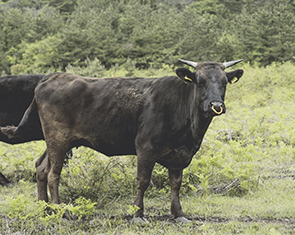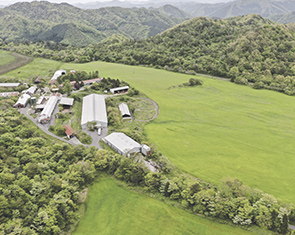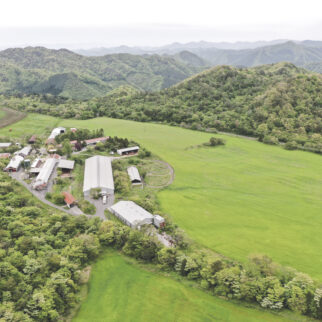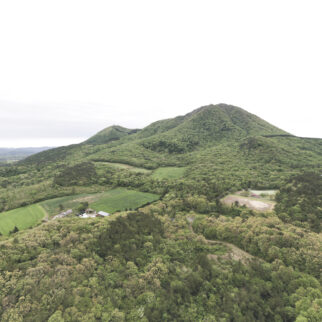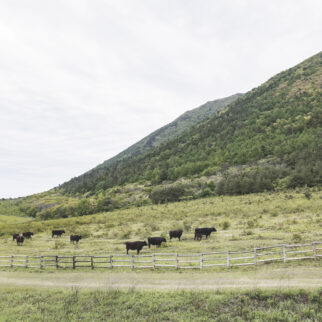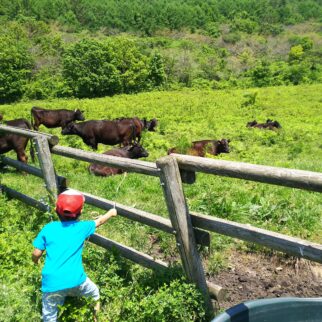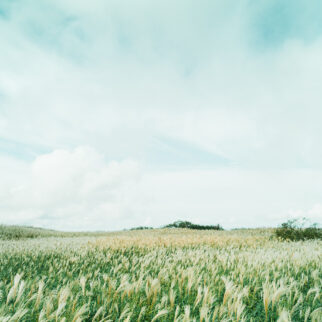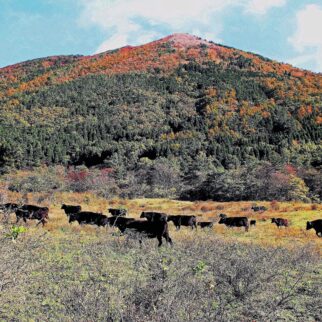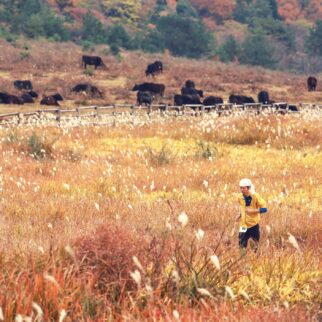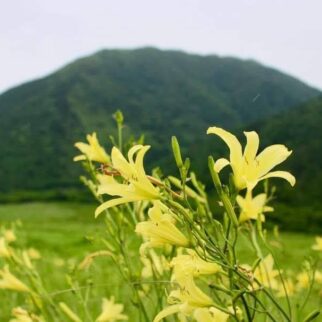 Sanbe Volcano that has nurtured
Sanbe Volcano that has nurtured
a bountiful way of life
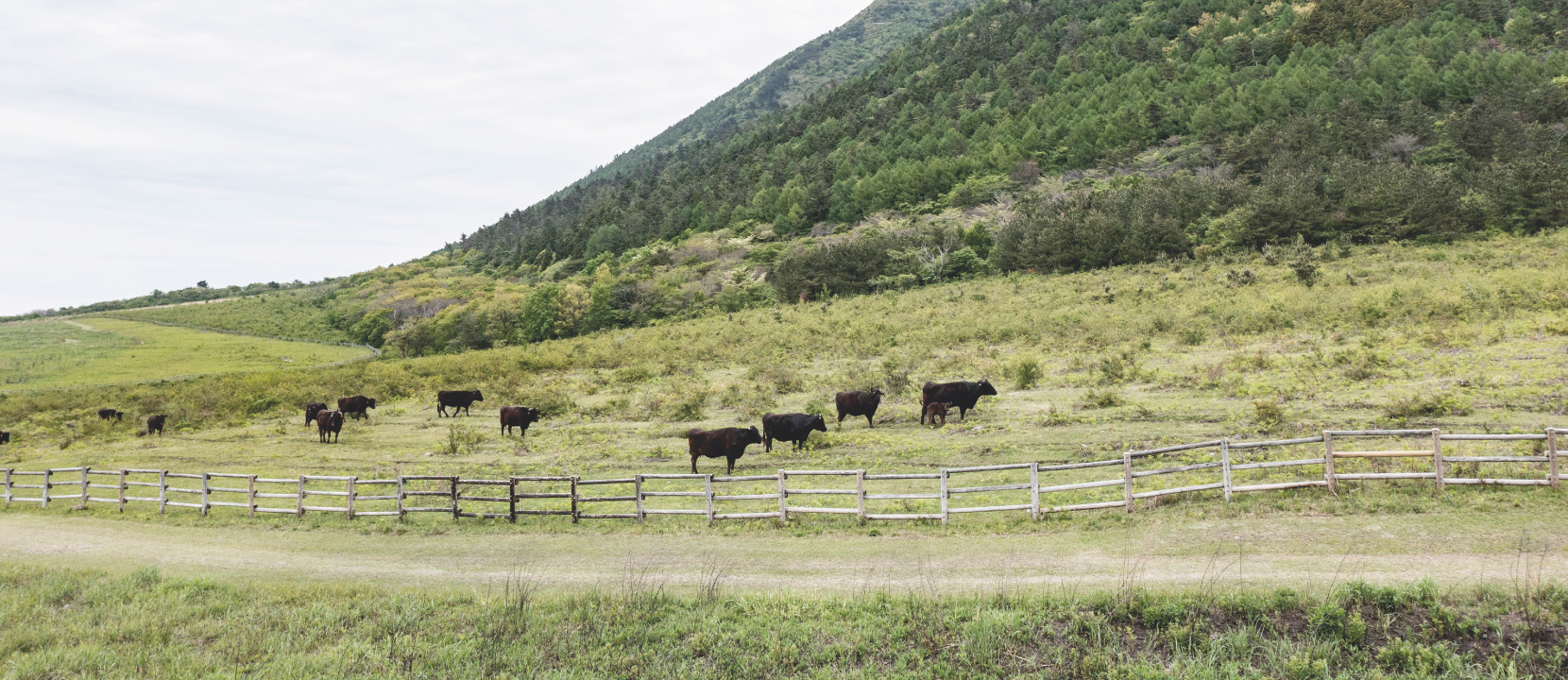
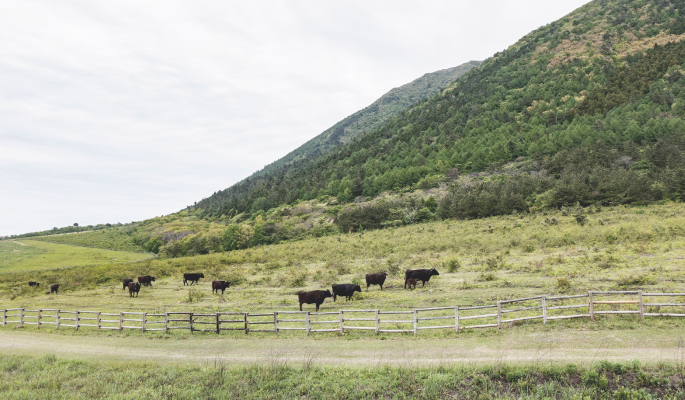
Development at the base of the volcanic land formation
Pastoral scenery of Mt. Sanbe
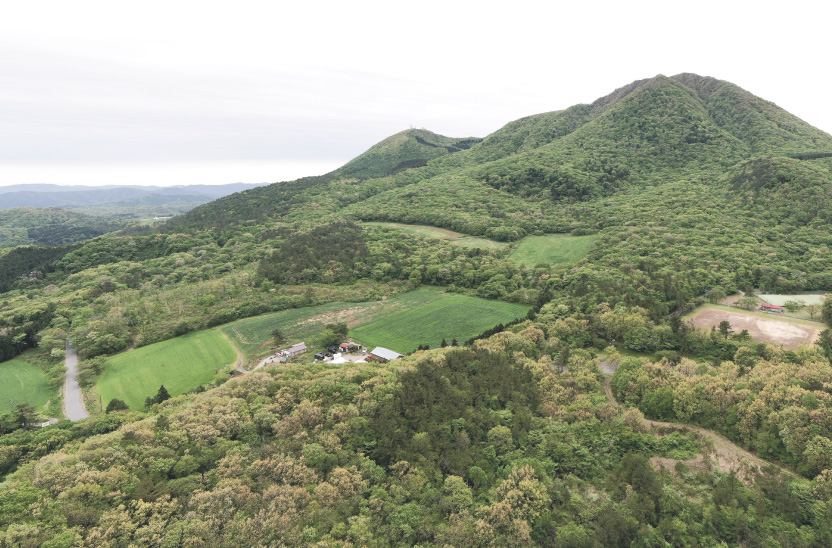
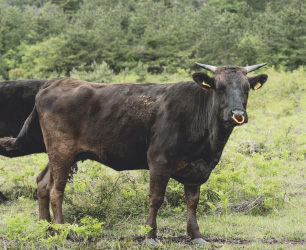
The beautiful scenery of the grassland spreads out at the foot of the tightly packed cluster of peaks. Sometimes you can even see cows grazing. The grasslands are also a treasure trove of rare flowering plants such as pasque-flowers, yu-suge lilies, and Japanese gentians.
The landscape of expansive grasslands was born from many years of raising cattle and horses. This land of volcanic ash soil was scarce in water and could not be used for crop farming. It was the Yoshinaga domain, established within the territory of the Iwami Ginzan Silver Mine in the first half of the Edo period, that encouraged the use of this land for raising cattle and horses. The breeding of cattle, important as a labor force for agriculture and transportation of goods, was also an economic promotion measure. The grasslands were also used for a time as training grounds for the former Japanese Army. The current scenery has been formed over a long history.
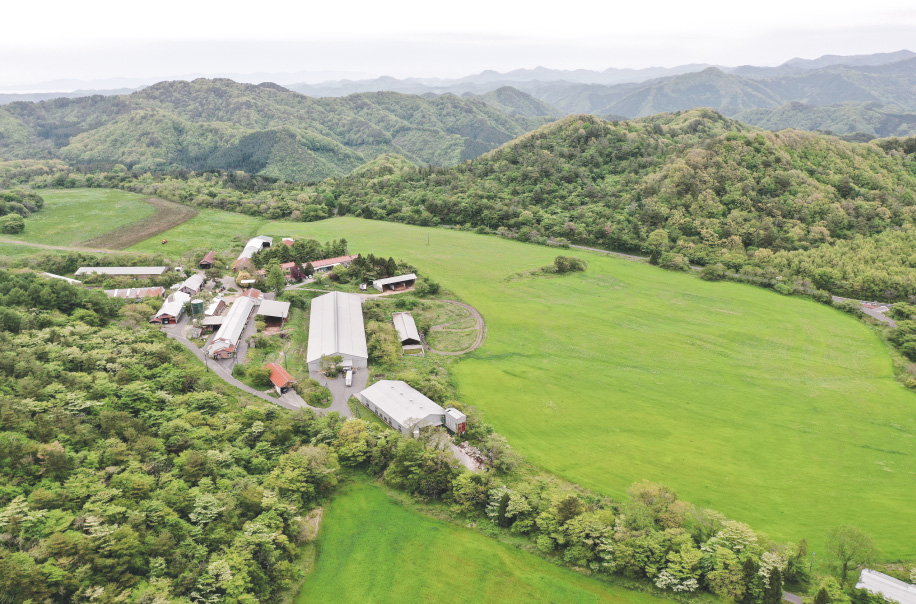
- 1A land of volcanic ash soil
- The foot of Mt. Sanbe is surrounded by gentle slopes such as the land of Nishinohara. This landform was created when lava erupted from within the caldera and formed peaks, and the ejecta that cascaded down in a pyroclastic flow at the foot of the mountain, as well as sediment that flowed out due to erosion after the volcanic activity, filled the depressions of the caldera. The ground is made up of thick deposits of volcanic ash and gravel, so water drains away very easily, and because rainwater seeps into the ground quickly, almost no water flows on the surface. This made it very difficult to use the land for cultivating fields.
- 2Yoshinaga Domain
- During the Edo period, the Oda City area was under the direct control of the shogunate as the territory of the Iwami Ginzan Silver Mine, but for a 40-year period from 1643 to 1682, the Yoshinaga domain was established, and the Kato family, who had been the lords of the Aizu Domain, ruled over this new domain, setting up a regional government office and governing 20 regions, including the Sanbe region. Under the Yoshinaga Domain, various economic promotion measures were carried out, one of which was the encouragement of raising cattle and horses around Mt. Sanbe.
- 3Former Japanese Army training grounds
- The grasslands of Mt. Sanbe were also used as training grounds for the former Japanese Army from the 1880s. A barracks was set up in the Shigaku district of Sanbe-cho, Oda City, and soldiers who came from Hiroshima and Hamada to train conducted artillery training and other exercises at Nishinohara, Higashinohara, and Kitanohara.





